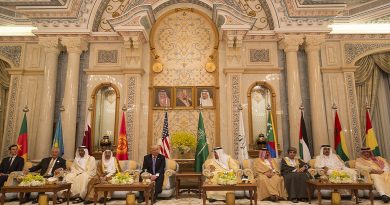The Doomsday Clock keeps ticking: It is now 2 minutes to the end of the world
The Doomsday Clock, a symbol of mankind’s proximity to an apocalypse of its own creation, has been moved 30 seconds in the wrong direction for the second year in a row. The Bulletin of Atomic Scientists, which has updated the clock yearly since 2015, takes into account developing technologies, environmental changes, and nuclear risk – with the later assuming the center stage throughout 2017. Not since 1953 has the clock shown such a late hour. It is two minutes to midnight.
How close have we been from the apocalypse?
The clock was created in 1947 for the cover of the first magazine issue of the Bulletin of Atomic Scientists, being set at 7 minutes to midnight for design reasons. It was first reset in 1949, following the successful test of an atomic bomb by the Soviet Union, its hands moved to indicate 3 minutes before midnight. Four years later, after both the U.S. and the Soviet Union obtained thermonuclear capabilities within six months of each other, the clock was reset to 11:58, the closest it has been from midnight for over 60 years. Curiously, as little was known at the time regarding the circumstances and outcome of the Cuban missile crisis in 1962, the clock remained still that year, only to be set back five minutes in 1936, to 11:48, due to the signing of the Partial Test Ban Treaty between the world’s two nuclear superpowers.
The clock would go on to be set between 7 and 12 minutes to midnight during the 1960’s and 70’s, but with the hardening of the U.S. nuclear posture as a result of the Soviet invasion of Afghanistan, the clock ticked between 11:56 and 11:57 from 1981 to 1988. The end of the Cold War would keep the clock at more than 10 minutes from midnight until 1998, a year when India and Pakistan conducted nuclear tests 3 weeks apart , initiating a downwards trend worsened by the 911 terrorist attacks, Iran’s nuclear ambitions, and North Korea’s nuclear program. Since 2007, the clock has also started to reflect developments in climate change and, from 2015 onwards, emerging technological threats (e.g. cyber-attacks or artificial intelligence). The clock has been set at 3 minutes to midnight or less since 2012.
Two minutes to midnight
According to the 2018 Doomsday Clock statement, the previous year has witnessed “reckless language in the nuclear realm”, with major nuclear powers “on the cusp of an arms race“, leaving the international security system “as dangerous as it has been since World War II.” In that regard, several situations were highlighted, namely the straining relationship between the U.S. and Russia, tensions in the South China Sea and in Indian-Pakistani ties, uncertainty concerning the Iranian nuclear deal and, most significantly, the progress made by North Korea in its nuclear weapons program.
Regarding climate change, the Bulletin of Atomic Scientists emphasized the Trump’s Administration withdrawal from the Paris Agreement, and the urgency in shifting course in order to deal with the undeniable reality of the link between human activity and the planet’s increasing temperature.
Finally, the journal’s science and security board expressed his concerns over “the loss of public trust in political institutions, in the media, in science, and in facts themselves”, resulting from wrong use of information technology. Other causes for alarm related to hacking, development of autonomous weaponry, and advances in synthetic biology.
Rewinding the clock
The Trump Administration has a central role to play if the Doomsday Clock is to be set back. New channels of dialogue instead of provocative rhetoric between the U.S. and North Korea are absolutely essential so that a freeze of the rogue nation’s nuclear program can occur. As talks between North and South of the Korean peninsula are planned to resume, it is fundamental that the U.S. is brought to the negotiating table – although not before Washington can voice a clear, coherent, and consistent nuclear policy, the lack of which is also hindering cooperation with its allies, and non-proliferation efforts in Iran. In addition, as the 2018 statement notes, there are currently no U.S.-Russia talks on nuclear disarmament, a condition that had not been seen in many years. Vladimir Putin has stated his willingness to negotiate a New START treaty renewal, and given the recent signs of arms race revival, and unraveling of old arms control treaties, the U.S. needs to take advantage of Russia’s interest in the matter (24:37). Regardless of their disagreements, non-proliferation has historically been a common interest of both countries (p. 214), and agreement on arms control, while difficult, has taken place on several occasions.
Another important step would be the return of the U.S. to the Paris agreement, a scenario which Trump acknowledged to be considering. Further international cooperation must also be fostered in order to address information and new technology misuse. As “technological innovation is occurring at a speed that challenges society’s ability to keep pace”, such progress needs to be managed.
The Bulletin of Atomic Scientists ends their latest statement with a positive note. They explain that “failure can be reversed”, and that citizens around the world still have an opportunity “to make a safe and saner world”. If their voice is heard, and world leaders respond to it by looking to cooperate, repair relationships, and build on agreements already in place, that future is certainly still a possibility.
Photo by Free-Photos / Public domain
![]() This work is licensed under a Creative Commons Attribution-NonCommercial-ShareAlike 4.0 International License.
This work is licensed under a Creative Commons Attribution-NonCommercial-ShareAlike 4.0 International License.




